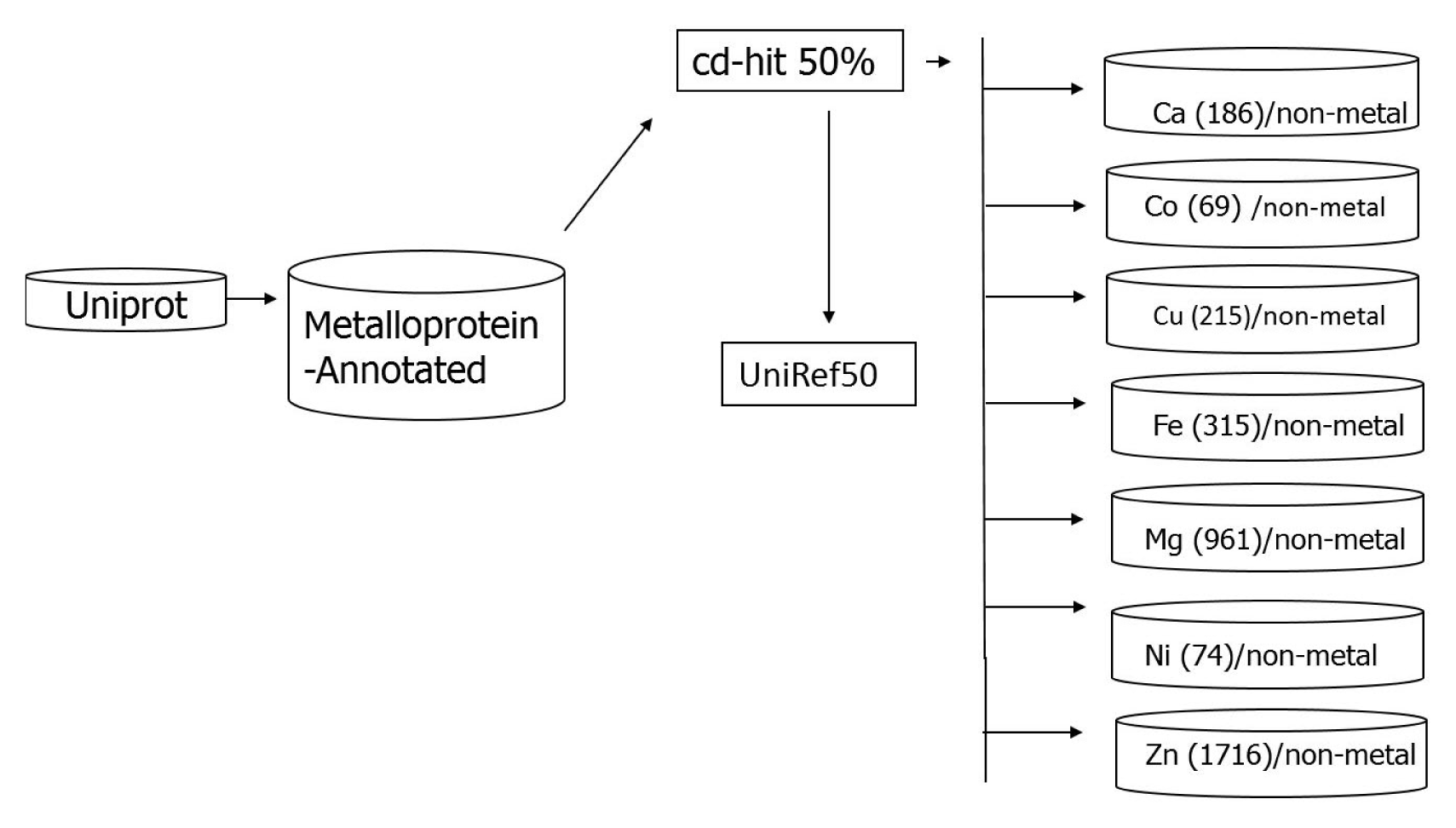2. Clapp LA, Siddons CJ, Whitehead JR, VanDerveer DG, Rogers RD, Griffin ST,
et al. Factors controlling metal-ion selectivity in the binding sites of calcium-binding proteins: the metal-binding properties of amide donors. A crystallographic and thermodynamic study. Inorg Chem 2005;44:8495–8502.


3. Kaur-Atwal G, Weston DJ, Green PS, Crosland S, Bonner PL, Creaser CS. On-line capillary column immobilised metal affinity chromatography/electrospray ionisation mass spectrometry for the selective analysis of histidine-containing peptides. J Chromatogr B Analyt Technol Biomed Life Sci 2007;857:240–245.


4. Feng S, Pan C, Jiang X, Xu S, Zhou H, Ye M,
et al. Fe3+ immobilized metal affinity chromatography with silica monolithic capillary column for phosphoproteome analysis. Proteomics 2007;7:351–360.


5. Osborn MT, Herrin K, Buzen FG, Hurlburt BK, Chambers TC. Electrophoretic mobility shift assay coupled with immunoblotting for the identification of DNA-binding proteins. Biotechniques 1999;27:887–890. 892.


6. Smith MF Jr, Delbary-Gossart S. Electrophoretic mobility shift assay (EMSA). Methods Mol Med 2001;50:249–257.


7. Korshin G, Chow CW, Fabris R, Drikas M. Absorbance spectroscopy-based examination of effects of coagulation on the reactivity of fractions of natural organic matter with varying apparent molecular weights. Water Res 2009;43:1541–1548.


8. Nigg PE, Pavlovic J. Characterization of multi-subunit protein complexes of human MxA using non-denaturing polyacrylamide gel-electrophoresis. J Vis Exp 2016;(116):e54683.

9. Jensen MR, Petersen G, Lauritzen C, Pedersen J, Led JJ. Metal binding sites in proteins: identification and characterization by paramagnetic NMR relaxation. Biochemistry 2005;44:11014–11023.


10. Rondeau P, Sers S, Jhurry D, Cadet F. Sugar interaction with metals in aqueous solution: indirect determination from infrared and direct determination from nuclear magnetic resonance spectroscopy. Appl Spectrosc 2003;57:466–472.


11. Zhu D, Herbert BE, Schlautman MA, Carraway ER. Characterization of cation-pi interactions in aqueous solution using deuterium nuclear magnetic resonance spectroscopy. J Environ Qual 2004;33:276–284.


12. Butler M, Cabrera GM. A mass spectrometry-based method for differentiation of positional isomers of monosubstituted pyrazine N-oxides using metal ion complexes. J Mass Spectrom 2015;50:136–144.


13. Lin CT, Lin KL, Yang CH, Chung IF, Huang CD, Yang YS. Protein metal binding residue prediction based on neural networks. Int J Neural Syst 2005;15:71–84.


14. Passerini A, Punta M, Ceroni A, Rost B, Frasconi P. Identifying cysteines and histidines in transition-metal-binding sites using support vector machines and neural networks. Proteins 2006;65:305–316.


16. Deng H, Chen G, Yang W, Yang JJ. Predicting calcium-binding sites in proteins: a graph theory and geometry approach. Proteins 2006;64:34–42.


18. Chen Z, Wang Y, Zhai YF, Song J, Zhang Z. ZincExplorer: an accurate hybrid method to improve the prediction of zinc-binding sites from protein sequences. Mol Biosyst 2013;9:2213–2222.


19. Levy R, Edelman M, Sobolev V. Prediction of 3D metal binding sites from translated gene sequences based on remote-homology templates. Proteins 2009;76:365–374.


23. Tainer JA, Roberts VA, Getzoff ED. Metal-binding sites in proteins. Curr Opin Biotechnol 1991;2:582–591.


25. Lu MF, Xie Y, Zhang YJ, Xing XY. Effects of cofactors on conformation transition of random peptides consisting of a reduced amino acid alphabet. Protein Pept Lett 2015;22:579–585.


26. Liu B, Xu J, Lan X, Xu R, Zhou J, Wang X,
et al. iDNA-Prot|dis: identifying DNA-binding proteins by incorporating amino acid distance-pairs and reduced alphabet profile into the general pseudo amino acid composition. PLoS One 2014;9:e106691.



27. Feng PM, Chen W, Lin H, Chou KC. iHSP-PseRAAAC: Identifying the heat shock protein families using pseudo reduced amino acid alphabet composition. Anal Biochem 2013;442:118–125.


28. Chakrabarti P, Pal D. The interrelationships of side-chain and main-chain conformations in proteins. Prog Biophys Mol Biol 2001;76:1–102.


29. Etchebest C, Benros C, Bornot A, Camproux AC, de Brevern AG. A reduced amino acid alphabet for understanding and designing protein adaptation to mutation. Eur Biophys J 2007;36:1059–1069.


30. Weathers EA, Paulaitis ME, Woolf TB, Hoh JH. Reduced amino acid alphabet is sufficient to accurately recognize intrinsically disordered protein. FEBS Lett 2004;576:348–352.


31. The UniProt Consortium. UniProt: the universal protein knowledgebase. Nucleic Acids Res 2017;45:D158–D169.


34. Cohen G, Hilario M, Sax H, Hugonnet S, Geissbuhler A. Learning from imbalanced data in surveillance of nosocomial infection. Artif Intell Med 2006;37:7–18.


36. Rose GD, Geselowitz AR, Lesser GJ, Lee RH, Zehfus MH. Hydrophobicity of amino acid residues in globular proteins. Science 1985;229:834–838.


39. Smith TC, Frank E. Introducing machine learning concepts with WEKA. Methods Mol Biol 2016;1418:353–378.


43. Mandal M, Mukhopadhyay A, Maulik U. Prediction of protein subcellular localization by incorporating multiobjective PSO-based feature subset selection into the general form of Chou’s PseAAC. Med Biol Eng Comput 2015;53:331–344.














